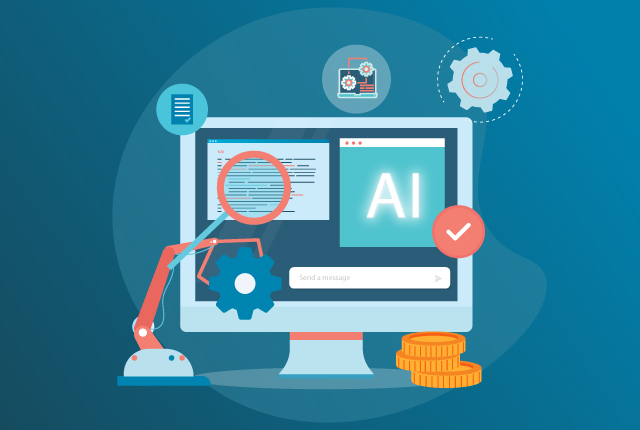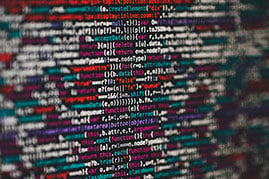
Integrating artificial intelligence (AI) and automation offers a strategic approach to redefining operational processes, driving cost-effectiveness and productivity. Research has shown that integrating these technologies can lead to a 50% reduction in operational costs while tripling process efficiency.
As a result, the combination of AI and automation is reshaping the business landscape.
This analysis delves into the nuances of this integration, illustrating how AI and automation are revolutionizing business operations.
The Synergy of AI and Automation
-
Business Process Enhancement: By combining AI's intelligent data processing with RPA's operational efficiency, businesses achieve higher precision and consistency in tasks. This integration is not merely about automating routine tasks but elevating them through sophisticated, context-aware technologies.
Example: RPA and AI work together in healthcare to streamline patient registration and billing, enhancing accuracy and patient service efficiency. It's not just about replacing human effort but augmenting it with advanced technology like robotic process automation (RPA) and intelligent process automation (IPA).
-
Driving Cost-Effective Operations: AI's analytical prowess aids in making strategic, data-driven decisions that significantly reduce costs. Predictive analytics and intelligent insights lead to more efficient resource allocation and operational strategies.
Example: In supply chain management, AI and RPA collaborate to optimize logistics, dynamically adjusting routes and managing inventory in real-time, slashing transportation and storage expenses.
-
Streamlining Workflows: Automating repetitive tasks frees employees to focus on complex and strategic activities, enhancing overall productivity and job satisfaction.
Example: Legal firms employ AI and RPA for automated document management and legal research, allowing attorneys to concentrate on client engagement and case strategy.
-
Accelerating Software Development: AI augments code generation and maintenance, enabling faster responses to market changes. Powered by AI, predictive maintenance proactively addresses potential system failures, minimizing downtime.
Example: AI tools in software development automate code reviews and bug detection, streamlining the development process and improving code quality.
-
Ensuring Timely Project Completion: AI and RPA integration guarantees adherence to project deadlines, a key factor in maintaining competitive advantage and client satisfaction.
Example: AI-based project management tools use historical data to forecast project timelines, enabling proactive adjustments to resources and schedules.
-
Encouraging Creativity and Responsiveness: AI offers novel insights, fostering creative problem-solving and enabling businesses to adapt to market changes swiftly.
Example: In marketing, AI-driven tools create dynamic, personalized content, keeping pace with evolving consumer trends.
-
Enhancing Decision-Making: AI's capability to analyze extensive data sets leads to more informed, strategic decisions in various sectors.
Example: In environmental conservation, AI analyzes climate data, aiding policymakers in sustainable resource management and environmental protection.
Integration Considerations
-
Selecting Appropriate Solutions
Selecting suitable AI and Automation technologies is crucial, requiring an understanding of specific business needs and goals. A one-size-fits-all approach is ineffective in this context.
-
Scalability and Compliance
Ensuring that AI-generated code is scalable is critical for future expansion. Additionally, compliance with legal and ethical standards is non-negotiable when deploying these technologies.
-
Workforce Reskilling
As new technologies are integrated, reskilling employees becomes essential. This ensures that the workforce can effectively utilize these tools, bridging the gap between human and machine capabilities.
-
Data Security and Privacy
In an age where data is invaluable, ensuring the security and privacy of automated systems and AI algorithms is paramount. This is not only a legal obligation but also a trust factor for customers and stakeholders.
-
Regular Maintenance and Updates
AI and Automation systems require regular maintenance and updates to remain effective. This ongoing process ensures that these systems are optimized to meet changing business requirements.
-
Vendor Selection and Data Ownership
The choice of vendor for AI and Automation solutions plays a pivotal role in the success of these integrations. Equally important is establishing clear protocols for data ownership and usage.
Challenges and Solutions in AI and RPA Integration
Overcoming Integration Complexities
Integrating AI and RPA into existing systems presents several challenges, including technical compatibility, employee resistance, and cost constraints. Addressing these complexities requires a strategic approach:
- Technical Compatibility and Integration: Ensuring that AI and RPA systems seamlessly integrate with existing software and workflows is crucial. Solution: Employ a phased integration approach, starting with non-critical functions to identify and resolve compatibility issues.
- Employee Adaptation and Reskilling: Resistance from employees due to fear of job displacement is a common challenge. Solution: Implement training programs to reskill employees, emphasizing the complementary role of AI and RPA in enhancing their work, not replacing it.
- Cost and ROI Concerns: The initial investment in AI and RPA can be substantial. Solution: Develop a clear ROI model that outlines long-term savings and efficiency gains to justify the upfront costs.
- Data Quality and Management: AI and RPA systems require high-quality data to function effectively. Solution: Invest in robust data management and cleaning processes to ensure data accuracy and reliability.
- Maintaining Security and Privacy: Integrating AI and RPA can raise concerns about data security and user privacy. Solution: Implement stringent security protocols and regularly update them to protect against evolving threats.
Future Trends in AI and RPA
Innovations Shaping the Future
The landscape of AI and RPA is continuously evolving, with new trends emerging that are set to redefine these technologies:
- Advancements in Natural Language Processing (NLP): Future AI systems will likely exhibit enhanced understanding of human language, making interactions more intuitive and expanding the scope of automation.
- Increased Focus on Ethical AI: As AI becomes more pervasive, there will be a greater emphasis on developing ethical AI frameworks to ensure fairness, transparency, and accountability.
- Integration with IoT: The convergence of AI, RPA, and the Internet of Things (IoT) will enable more sophisticated and interconnected automation solutions across various industries.
- Self-learning and Adaptive Systems: AI and RPA systems will become more self-reliant, capable of learning from their operations and adapting to changes without human intervention.
- Personalization at Scale: AI's ability to analyze vast amounts of data will enable hyper-personalized experiences in sectors like marketing, healthcare, and customer service.
How QASource Can Help
QASource understands the intricacies of integrating AI and Automation within business processes. Our expertise lies in tailoring these technologies to fit unique business needs, ensuring they align with specific operational goals. We offer a pragmatic approach, focusing on tangible outcomes and sustainable growth. Connect with us to explore how we can assist in transforming your business operations with the power of AI and Automation.
Conclusion
AI and Automation represent more than just a technological partnership; they signify a fundamental shift in businesses' operations. By embracing these technologies, companies can achieve greater efficiency, innovation, and competitiveness. This duo is set to redefine the business operations landscape, offering a blend of efficiency, innovation, and strategic insight.






